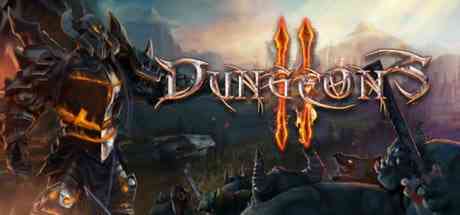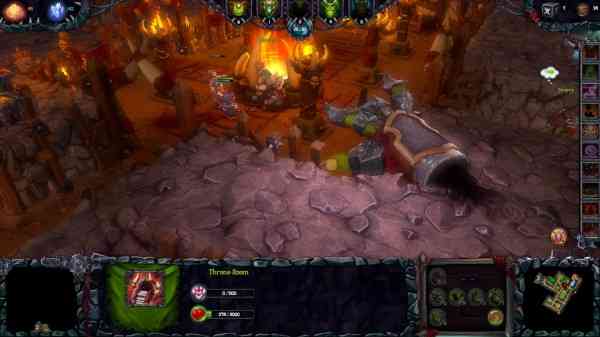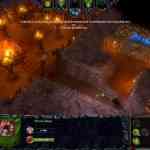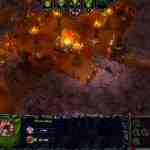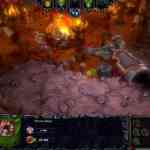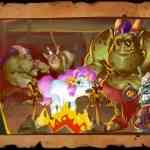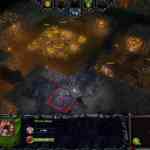In Dungeons 2 it’s easy to get so carried away excavating rooms and designing your dungeon that you forget that there are enemies coming to kill you. And when they arrive, you realize you forgot to build a guard room, or hire enough minions to defend the dungeon. Or maybe you just forgot to slap your Snots enough. I played an early build of the game which included the first four levels of the single player campaign as well as a skirmish mode.
Since it straddles multiple genres, Dungeons 2 finds itself in the somewhat unusual position of not trying to fit into any of those established genres while simultaneously being forced to live up to expectations associated with all of them. It’s at least an RTS, a worker management game, and a dungeon simulator (and a tower defense game without the towers). If it were just any one of those things it would be an unremarkable entry in its respective genre. But all together it’s something more interesting.
Controlling a dungeon being attacked by heroes, instead of playing the heroes themselves, has been explored before, and though there are plenty of comparisons to make to older games, the concept is executed well stylistically in Dungeons 2. The game doesn’t take itself too seriously, and the narrator is a sort of cross between the narrator in Bastion and an episode of Monty Python. The humor isn’t exactly original but it gives the game some personality.
There are some mechanical encumbrances, mostly to do with the user interface. This is to be expected in early builds, but they’re worth mentioning since they seem to have more to do with the philosophy of the design rather than the unfinished nature of the preview.
The differences between unit control above and below ground can be disorienting and, at times, frustrating. To select multiple units above ground, simply drag a rectangle around them as you would in any RTS. To do so below ground, however, you have to click each one separately to “pick them up” and then right click to drop each minion where you want them to go. Then they’ll probably just walk back to wherever they were before. It’s strange that as the supposed ultimate controller of the dungeon you have absolute control over your minions only when they’re not in the dungeon. This seems fairly intentional, however, since the above and below ground mechanics are supposed to be different.
Unit autonomy is not without its benefits, as your noncombat “Snots” will go about their business below ground, digging holes and mining gold all on their own as long as you’ve marked which areas are to be excavated. Perhaps the biggest downside to having workers who think for themselves is that they’ll demand to be paid for their work. Every few minutes in the game it’s “payday” and all of your underground minions stop what they’re doing and walk to the nearest treasury to receive their wages. This is one of the aspects of managing your dungeon. If they take too long to find their money they’ll spend too much time walking around so you’re incentivized to build treasuries close to where you want your workers to be. And then you’ll probably have to pick up and move various piles of gold to fill those treasuries. And then suddenly you’re playing a gold pile simulator. Above ground your units simply receive their gold instantly out of thin air, again leading one to wonder why the ultimate evil has the ability to wire funds to his minions only when they are outside of his subterranean realm.
More minutely, it’s often hard to know whether you’re clicking on a unit, a room, or a machine in that room (or a pile of gold, or a powerup). Part of this is because of the size of the cursor hand (underground it’s quite large, and is represented as a physical object in the game world), and part of it is that there’s very little indication of what is selected or currently being hovered over. This may seem like a small detail, and it could be addressed in later builds, but part of the strength of the best RTS games (and games that share certain features with them) is their attention to detail. An easy to use unit interface is a complicated thing to do well.
Minor difficulties aside, if you’re looking for a blend of sarcastic and slightly dark humor wrapped up in a hybrid of multiple genres, there are plenty of dungeon corridors to dig out and hidden rooms to discover in Dungeons 2. Just don’t forget the guard room.
***A preview code was provided by the Publisher***
